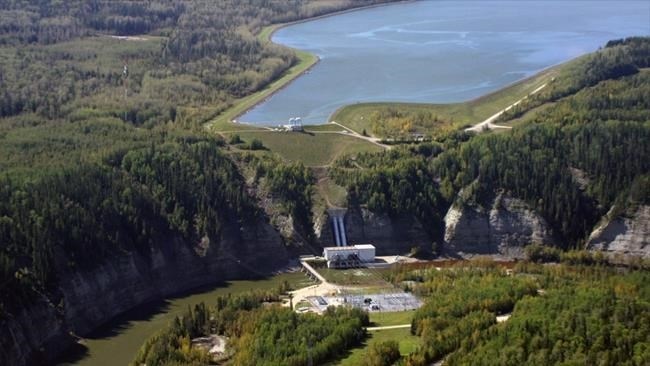
TransAlta's largest hydro plant Brazeau is shown in this undated handout image. The rise of renewables has created a need for energy storage that companies are fulfilling with underwater balloons, multi-tonne flywheels, and decades-old designs that have been waiting for their time.
Image Credit: THE CANADIAN PRESS/HO-TransAlta
January 16, 2017 - 6:00 AM
CALGARY - The rise of renewable power has created a need for energy storage that companies are fulfilling with underwater balloons, multi-tonne flywheels and decades-old designs.
"Where renewables go, storage will follow," said John Wright, project manager at Northland Power.
The need for energy storage comes from the temporary and sometimes unpredictable nature of renewable energy. The wind doesn't always blow and the sun doesn't always shine.
Power companies and utilities have been looking to compensate for that with what amount to giant batteries and smooth out delivery, storing energy in times of low demand and distributing it when demand is high.
Northland has been developing a 400-megawatt pumped storage project that takes the form of an old flooded mine, sitting on a plateau just outside of Marmora, Ont.
The roughly $900-million project in eastern Ontario pumps water up into the mine pit when there's extra energy, and then lets it run out through a turbine when more energy is needed.
Meanwhile Alberta's plan to replace coal-fired power plants with 5,000 megawatts of new renewable energy — more than the total amount of renewable energy currently online in Ontario — has prompted TransAlta Corp. to dust off half-century-old plans to expand its Brazeau hydroelectric project.
Similar to Northland's Marmora project, Brazeau would be a pumped storage operation that would allow the company to pump water back up to the reservoirs of the existing hydro project.
TransAlta currently uses the project's 355 megawatts of hydro to cover peak demands, while the expansion would add 600 to 900 megawatts of capacity and increased its flexibility.
In announcing it was restarting development of the estimated $1.8 billion to $2.5 billion project last fall, TransAlta chief executive Dawn Farrell said the project was slated to be the company's next hydro project in the 1960s before coal power became economic in the province.
"So the world turns around in a big circle, and here we are back to this project," said Farrell.
The circle is even tighter at Turning Point Energy, where Peter Bubik is trying to develop the Canyon Creek pumped storage project on the edge of an inactive coal mine lease in the Rocky Mountain foothills.
He says pumped storage is still the most proven way of storing large amounts of energy, with Canada's only existing pumped storage operation near Niagara Falls now in operation for 60 years.
"It is the most technologically proven way of storing bulk energy, and today still the cheapest way of storing energy," said Bubik.
But new technology is opening other options.
Hydrostor is piloting a project with Toronto Hydro where air is compressed using power and pumped into underwater balloons sitting on the bottom of Lake Ontario.
When the power is needed, the water pressure helps push the air back out through turbines and the power is sent to the grid.
Hydrostor chief executive Curtis VanWalleghem said compressed air is growing as a way to store energy, but that it's usually limited by the need for old mines or caverns in which to pump the gas.
"What you really need to do is fix the problem about where to store the air, and that's what we focused on, and that's proving to be the winning sauce," VanWalleghem said.
Temporal Power, another energy storage start-up, helped build Canada's first grid-connected flywheel, which acts like a wind-up toy and helps smooth out minor supply variations.
The flywheel project is one of several that Ontario's Independent Electricity System Operator has procured in recent years.
Chuck Farmer, director of stakeholder and public affairs, said that the IESO is waiting for Ontario's long-term energy plan set to come out later this year before making any decisions on further energy storage projects, but that he sees energy storage as a long-term part of the grid.
"We see it at some point participating on an even footing with all the other things that provide services and energy, and we think it will get there in relatively short order," said Farmer.
News from © The Canadian Press, 2017